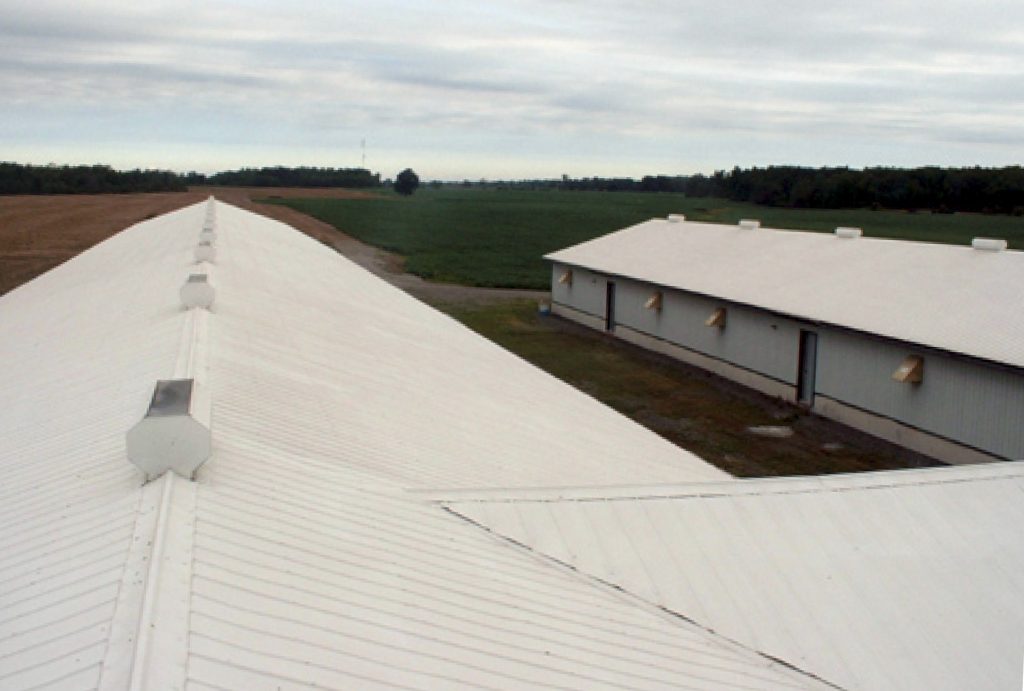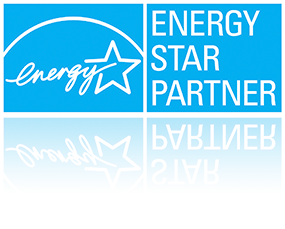Poultry House Niagara Falls with Super Therm®
Higher feed conversion and healthier chickens
Super Therm® applied to the roof of a 1850 m2 (20,000 f2) poultry house in Niagara Falls Canada, to help reduce the temperature. Current insulation materials (Cel Pak) being used in the houses become loaded with moisture from condensation and must be replaced every 5 years.
Super Therm® coated houses eliminate condensation and will perform for 20 years without concern for reinsulation. Super Therm® provides the added environmental benefits of a reduced HEAT ISLAND EFFECT.
Heat stressed birds have reduced profitability in several different ways:
- Increased mortalities – any direct loss is important as the cost of the chick is immediately lost, as well as any feed that has been ingested.
- Lower and less consistent weights – heat stressed birds will not eat during the day. When temps. drop during the evening, the birds rush for the feeders, fight for position, and then gorge. Binge eating reduces potential gains, and due to fighting, smaller birds have less of a chance to eat, resulting in inconsistent weights that irritate processors.
- Higher feed conversions – The greatest cost in poultry production is the feed cost. Due to energy losses of the birds trying to keep cool, as well as changes in feeding habits, poor feed conversions can strip a lot of profits from a flock.
Super Therm® applied to a Bin Feeder prevents condensation, protecting feed from moisture.
Super Therm® was used on Cold Water Pipes inside the poultry house. The lines remain cool due to the moving water, and high heat and humidity inside the house can cause condensation to form on the outside of the pipes. This water drips onto the bedding, reducing litter quality. Wet litter can be a reservoir for disease. Super Therm® eliminates condensation, helping to prevent outbreaks of coccidiosis and enteritis.


























